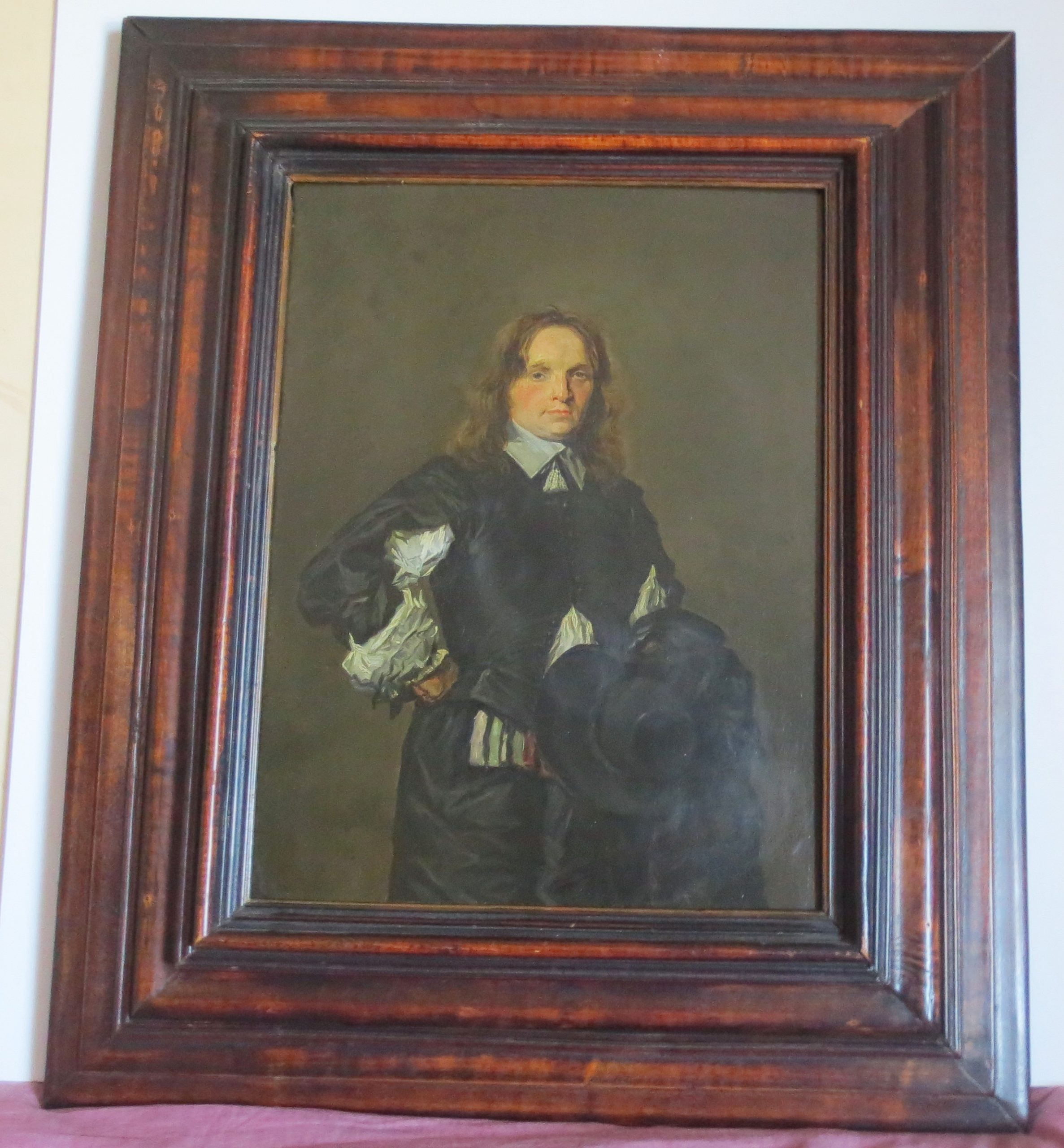Based on an unidentified portrait from the early 1650s by Frans Hals (New York, Metropolitan Museum of Art; cf. Slive 1974, III, p. 99, no.190). Technique, style and quality firmly place this panel among several other small repliques done by Jan of his father’s work, often with near deceptive fidelity. The painting first appeared in New York at a Parke-Bernet auction on 14 March 1951, lot 9 wrongly ascribed to Harmen Hals whose work was far inferior to this panel. It was again offered at Parke-Bernet on 5 March 1952, lot 31; in the early 2000s it was purchased at auction by a private collector who recognized its subject, source and, with the benefit of more recent scholarship, its proper artist was recognized as Frans’ son Jan.
Although partially known from older documents and a few small deft genre paintings, already largely known since the late nineteenth century (cf. Atkins p, 267 n.3), the full extent of Jan’s abilities in replicating his father’s bravado style in reduced scale was only fully explicated by Seymour Slive in his epochal Hals monograph of 1974 where he identified (with a hint from J.G.van Gelder) Jan’s signature or monogram on several kindred Halsian panels which Slive then illustrated in close comparison with Frans Hals’ own analogous paintings (cf. Slive 1974 I pp. 168- 172 and figs. 173 – 187.)
Of paramount interest here, Slive’s illustrated discussion of the anonymous Portrait of a Gentleman (Raleigh, North Carolina Museum of Art) might have been easily applicable to the panel at hand: both show the same strengths of drawing with comparably subtler placement of half-tones and less assertive full shadows. Although the handling of the clustered creases of white linen on the sleeve is as dashing as in the larger version, there is elsewhere greater use of a blending brush to subdue and merge transitional planes without abrupt edges. As the original impasto and glazes on the present panel are still intact, it may now be added to the select number of Jan’s surviving paintings as further evidence of his particular skill within his short life and career as his father’s artistic amanuensis.
The older literature on Jan pre-Slive was summed up by Christopher D.M. Atkins, The Signature Style of Frans Hals, Amsterdam, 2012, p.265 n.3. Basic on all fronts and several editions, Seymour Slive, Frans Hals, London-New York, 1974, 3 vols. A later partial re-edition of some of this material appeared as Seymour Slive, Frans Hals: Extensively revised second edition; London-New York, 2014, passim. Most of the text on Jan repeats the earlier edition save for some changes in the location of a painting; most of the older black and white illustrations have been repeated but reduced and worse for wear. The few relevant color plates are far superior to earlier printings.
The Raleigh painting was the subject of a Museum pamphlet neatly titled Like Father, Like Son? (Raleigh, 2000) that contained two excellent essays: Dennis P. Weller on Jan’s art and Noelle Ocon on the materials and technique of the Raleigh painting including several invaluable color details.

